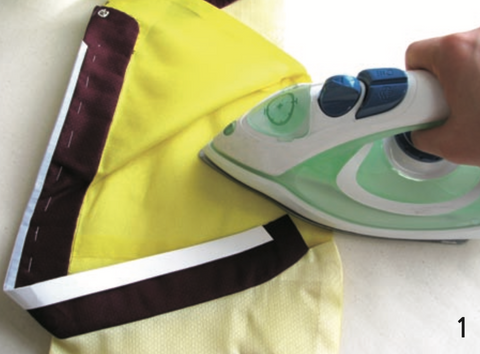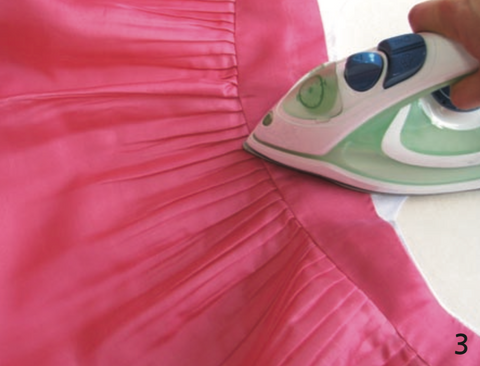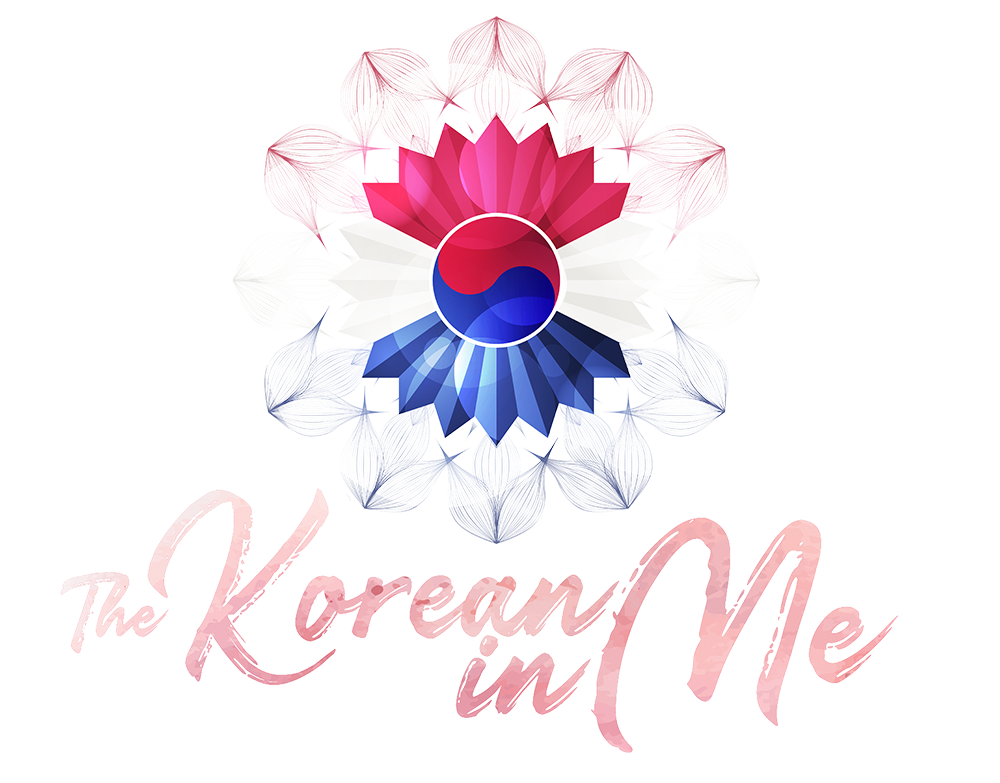A Buyer's Guide to Hanbok Fabrics and Hanbok Care
The Hanbok 101: Brief History, Different Fabrics, and How to Maintain Them
A Brief History on Hanbok
The hanbok comes from the word Han (한) meaning “Korea” and Bok (복) meaning “clothing”. It’s the Korean traditional dress or costume called Hanbok (한복) in South Korea and Joseon-ot (조선옷) in North Korea.
The first historical records of the Hanbok can be traced back to the Goguryeo Dynasty from 37 BCE to 668 CE featuring the earliest forms of the Hanbok. Goguryeo (고구려) or also known as Goryeo (구려) is one of the three kingdoms of ancient Korea with Baekje (백제) and Silla (신라) and is now geographically located in the northern parts of the Korean Peninsula and encompasses Northeast China.
If you’re familiar with historical K-dramas, you might remember Goguryeo from Jumong (주몽) which was released back in 2006 played by Song Il-kook. In a 12th century text from Goryeo called the Samguk-sagi, Goryeo was said to be founded by Jumong, a prince from Buyeo, who was then enthroned as Dongmyeong. Goguryeo was one of the great powers in East Asia during its time.
The shortened name of Goguryeo, Goryeo (alternatively spelled Koryŏ), was adopted in the 5th century and was the origin of the English name “Korea”.
Today, the remnant of the Ancient Goguryeo Kingdom is preserved through the Capital Cities and Tombs of the Ancient Koguryo Kingdom which was declared as a UNESCO World Heritage SIte in 2004. It houses the archaeological remains of three fortress cities namely Wunü Mountain City (Onye Sanseong), Guonei (Gungnae), and Wandu (Hwando), and the 40 tombs built during this time.
The tomb murals found in this site depicted the art of the hanbok like this one which shows a Goguryeo man in a hunting attire wearing what is now known as the hanbok.

It was during this time that the basic structure of the hanbok was established: the jeogori (jacket), baji (pants), and chima (skirt). The top garment was at waist-length and tight-fitting while the bottom garments extend to the floor and are wider and more flexible. And as most studies on the Hanbok observed, its structure remained relatively unchanged until this time. Oftentimes, you would see foreigners wearing traditional hanboks while visiting tourist spots like the famous Gyeongbokgung Palace.
But the Hanbok of today is a direct descendant of the ones worn during the Joseon Dynasty (1392-1897) particularly during the late nineteenth century. The jeogori became shorter and more tightened while the chima or the skirt adopted a fuller volume and appearance which still reflected the distinct features of the previous hanbok with minor changes. The changes such as the shortening of the jeogori may have been influenced by the Japanese Invasions of Korea in 1592 until 1598 or what is now known as the Imjin War with the economic hardship that “bloomed” the practical use of less fabric.
By the start of the 1800s, the chima reached its fullness peak achieved around the knees and ankles creating a triangular shape or an A-shaped silhouette. On the other hand, men’s hanbok is simpler in style and did not undergo any significant changes as the jeogori and baji remain unchanged. The most dramatic change in men’s hanbok is focused on its lengthy outerwear or what is equivalently called overcoat.
Hanbok Fabric During Ancient Korea
Aside from the color and the patterns, the material, or the fabric used in hanboks also define one’s social status in Ancient Korea. The hanboks of the upper class are made of high-quality fabrics like the plain and patterned silks they commonly wear. You can see this in most historical K-dramas worn by the Kings and Queens and members of the Royal Family and the High Court.

Queen Seondeok was released in 2009 for the 48th founding anniversary of MBC and chronicles the life of Queen Seondeok of Silla from 632-647. In history, she was Silla’s twenty-seventh ruler and their first reigning queen and also the recorded second female sovereign in East Asia. Queen Seondeok is credited for the renaissance of thoughts, literature, and arts in Silla.
One can clearly see the elegance of her hanbok embroidered with patterns in gold and complemented with her elaborate accessories. Truly, befitting a queen.
Why are silk materials used in Hanboks?
Silk is the strongest natural textile made from natural processes but what makes it a coveted fabric more than its strength is its softness. It’s made from a natural protein fiber called the fibroin secreted by insects to make a cocoon. The most popular silk is derived from the Bombyx mori larvae which can only be found in mulberry trees.
Aside from its softness, silk also produces a shimmering optical effect which can be observed in certain lighting conditions. This effect is produced by the triangular prism-like structure of its fibers and when light is reflected at various angles, it results in a subtle rainbow hue. This quality of silk gives off the very elegant and rich “aura” in hanboks and makes it a perfect choice of fabric for the elites.
Silk can also be easily dyed-through both natural and chemical methods. Of course, back in the day, hanbok fabrics are dyed naturally. To get the deep red color like Queen Seondeok’s hanbok, you can use beets. Red clovers are used for gold silk while lavender, ose, strawberries, and cherries produce the color pink which is usually worn by both princes and princesses.
Today, China leads in the silk manufacturing industry in the world with 146,000 metric tonnes of silk produced per year. Consequently, it is also the world’s largest silk market. India comes in second with 28,708 metric tonnes of silk which is considerably lower than China. Uzbekistan and Thailand follow in third and fourth places respectively.
What are the types of silk that are commonly used for traditional Hanboks?
Oksa
Oksa or the twin cocoon is also called the Korean Silk Dupioni Organza and a rarely produced fabric most commonly used in traditional hanboks. It’s a stiff, rough, and translucent fabric made by reeling off raw silk from two or more than two silkworms in a cocoon.
When two silkworms spin their cocoons close enough, the fibers get naturally tangled and these naturally tangled fibers are used to make the thread. The resulting thread is characterized by bumps and irregularities which are manifestations of overlap of fibers.

Photo from http://uniquesilk.blogspot.com/2013/09/about-silk-organza.html
The stiffness of this fabric enables it to be good in terms of maintaining shape. It’s usually created using a semiautomatic weaving process which makes use of electricity although the producible width is very limited.
The bumps and irregularities found in the fabric give it its vintage look and feel. Additionally, the irregularities may also have different thicknesses and highly varies since production involves traditional weaving which plays a role in the quality of fabrics produced. There’s also the condition of the season as well as the cocoons which directly affect the threads. This means that you can’t purchase two exactly the same oksa.
Another feature of the oksa that makes it a very appealing fabric is the different depth of color it displays with the brightness of the light which is the biggest feature of see-through fabrics like this one. The “transparency” and gloss of the silk make it the perfect canvas for patchwork and results in a stained glass illusion.
General Oksa which features the slubs and irregular texture. This is the most commonly-used fabric in Korea and well-loved for its vintage vibe.

This Oksa features less slubs and irregular texture which makes it glossier than the one above. This is used for a more modernistic vibe for hanboks.
This fabric is already beautiful as it is and dyeing is not really a required process though adding some color to it will result in a more beautiful fabric. Any natural dye will work its magic onto this fabric since it’s 100% silk.
Watered Silk
Another type of silk used is the moire or what is more commonly known as watered silk. This is a textile with its distinctive wavy appearance. It can be produced from wool, cotton, or rayon but is mostly in silk. This appearance is created using the varying tension in warp and weft weave.
But this can also be achieved through the finishing technique called “calendering” wherein “fabric is folded lengthwise in half with the face side inward, and with the two selvedges running together side by side”. Heat and pressure are applied to the rollers after weaving to create the ripple effect.
There are many other types of silk used in making hanboks like the silk gauze, shantung silk, muslin silk, and gossamer silk.
How to maintain silk fabric?
The best way to maintain the integrity and quality of silk is to hand wash it using a mild detergent in lukewarm water. To rinse and to rid of excess moisture, instead of wringing it like normal fabrics, roll in a towel then hang to dry.
The most important don’ts are: Do not wring, soak, boil, bleach, or leave it crumpled.
—
During the warmer days or seasons, although silk fabrics absorb moisture very well, the fibers also tend to break down in sunlight or high temperatures so it’s not the best fabric of choice. Rather, royalties and individuals who belong to the upper-class wear hanboks made primarily of ramie combined with other lightweight materials.
Why is ramie used in hanboks?
Ramie (China grass) is also one of the strongest natural fibers and displays even greater strength when wet. Coming from the flowering plant in the nettle family Urticaceae which is native to eastern Asia, it is a herbaceous perennial distinguished by its heart-shaped leaves.
It has quite a list of good fabric properties such as the ability to maintain shape, reduce wrinkling, as well as introducing a silky luster or appearance to the fabric. It is commonly blended with other fibers like cotton and wool since it’s not as durable as other fabrics. When combined with wool, the shrinkage is reported to be significantly reduced. Ramie also shares a lot of its properties with linen.
Although the downside with ramie is that it has a very expensive extraction and production process due to its complexity and its inherent stiff and low elasticity properties.
Like silk, China tops the market export on ramie and is imported to Japan and Europe. Other countries that produce ramies are Japan, Taiwan, and the Philippines.
How to Maintain Ramie fabric?
Ramie can both be hand washed or machine-washed in cold or warm water. This is to prevent any shrinkage or stretching of the material. Remember that ramie fabrics are weakened by chlorine bleach. But dilute solutions of chlorine to remove stain and whiten is safe. Additionally, ironing it while the fabric is damp is best as high heat temperatures can damage the fabric.
—
The lower class individuals in society are not afforded the same range of options and choices as the elites. Commoners are usually dressed in hanboks made out of cotton regardless of the season or celebration.
Why is cotton used in hanboks?
Cotton is a chemically organic (no synthetic compound) fabric and one of the most commonly used fabrics. This is derived from the fibers which surround the seeds of cotton plants. The fibers emerge in a round, fluffy formation once the seeds are mature.
This textile has a relatively high tensile strength and is considered more durable than silk. But the appealing feature of cotton is its comfortability. It’s a highly absorbent material and also dries quickly. Aside from that, it also drapes well on the body though it can be prone to wrinkling, shrinking, and discoloration.
Aside from being a good material on its own, cotton is also used as a blend in most fabrics and today, 75% of the world’s clothing contains cotton.
The top three producing producers of cotton are China and India tied on the first spot and the US. Aside from these giants, Brazil, Pakistan, and Australia are also producing at least a million metric tonnes of cotton for export.
How to maintain cotton fabric?
Cotton, unlike all the other fabrics mentioned above, does not require any meticulous care.
—
These are just a few of the many different fabrics used in making hanboks. Nowadays, the materials are getting more innovative with the use of synthetic fibers such as polyester and neoprene and developing environmental-friendly fabrics from recycled materials.
Hanbok Fabric Care
Once you receive your hanbok and you wear it for that special day, what comes next? You'll need to find the best way to hang up your jeogori, chima, or baji because hanbok is made of premium quality fabric if you buy from an authentic hanbok store like the Korean In Me. It is not something that you can crumple up and then throw in the laundry machine! Ironing correctly can extend the life of your clothes, and is the key to looking put together.
In this post, we'll teach you how to properly iron your hanbok so that it looks brand new every time you proudly wear any hanbok look.
How to Properly Iron Your Hanbok
Important note:
Hanbok today is made of different materials, ranging from real silk to imitation silk. Check your fabric label tag. In most cases, iron hanbok with your iron on "silk mode".
For the upper garment (jeogori):

Iron the lining first, and then the lining of doryeon (hemline of jeogori) and then buri (hemline of sleeves). Press the linings slightly while ironing them, in order to keep them from sticking out. When it comes to ironing outer upper garment, keep the following order for ironing: back gil, back sleeves, front gil, front sleeves, inner git, outer git, and goreum.
For the baji (pants):

Iron the narrow sapok, wide sapok, and then iron the waist part along the seam line.
For the chima (skirt):

Iron the lining of the bottom part and its column first. Iron from bottom to top. When you iron the pleats, you should not iron the upper part of pleats which are within 5 to 6 inches from the waistline of the chima.
For embroidered or gilded parts:

If your hanbok attire has gold or silver decoration or embroideries on it, put another cloth on top of them when ironing. If you directly iron the clothes without any additional cloth put on top, the gilts will come off and the embroideries will become discolored.
Make sure to consult this handy how-to-iron guide before you press that hot iron onto the hanbok or potentially damage the delicate fabric.
If you have any tips or questions about hanbok care, or want to suggest a topic to cover, contact us or drop us a comment below!








